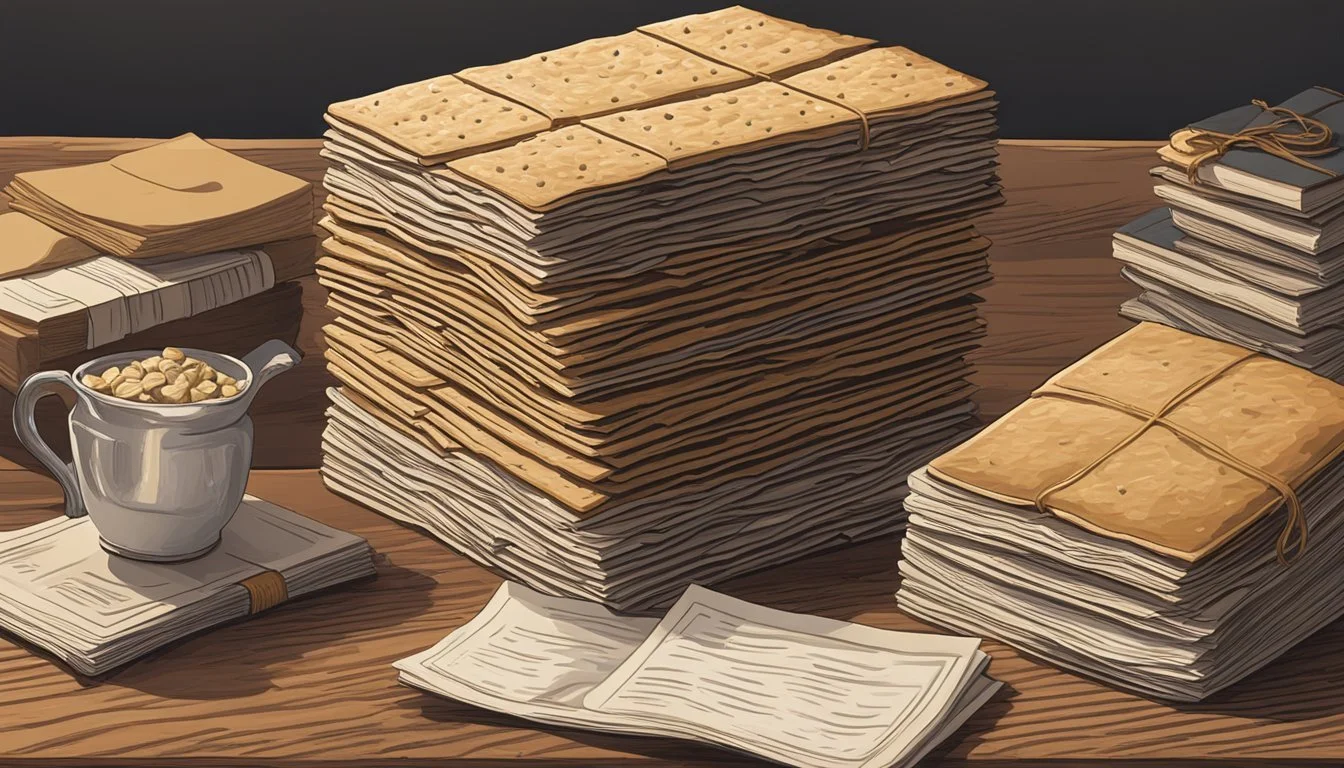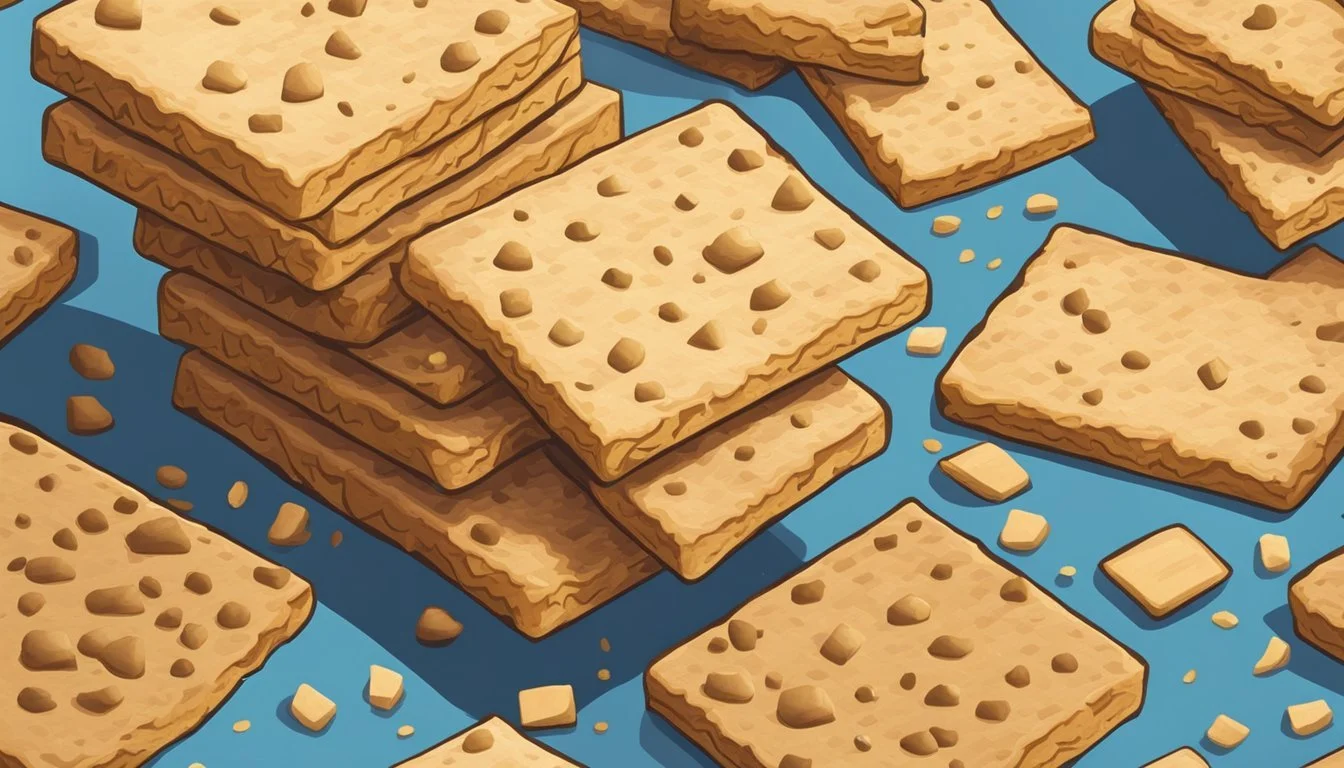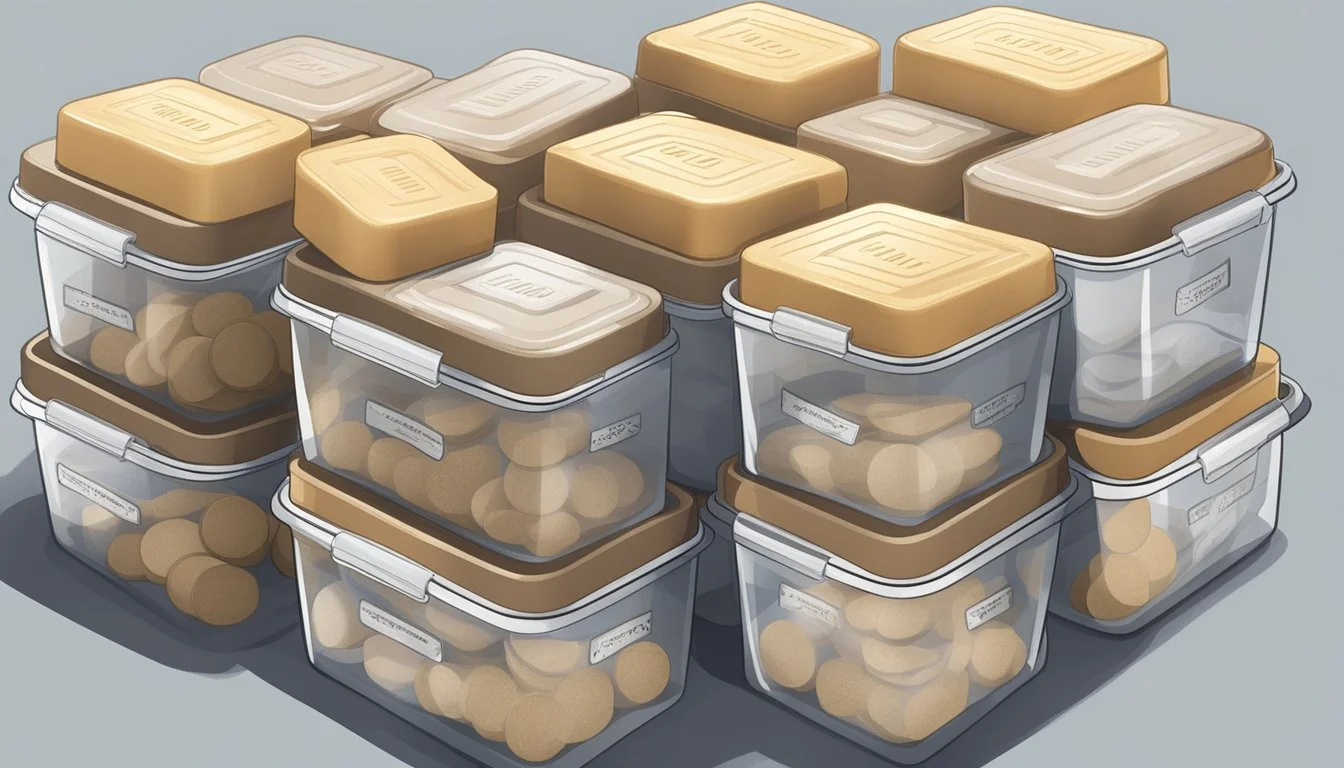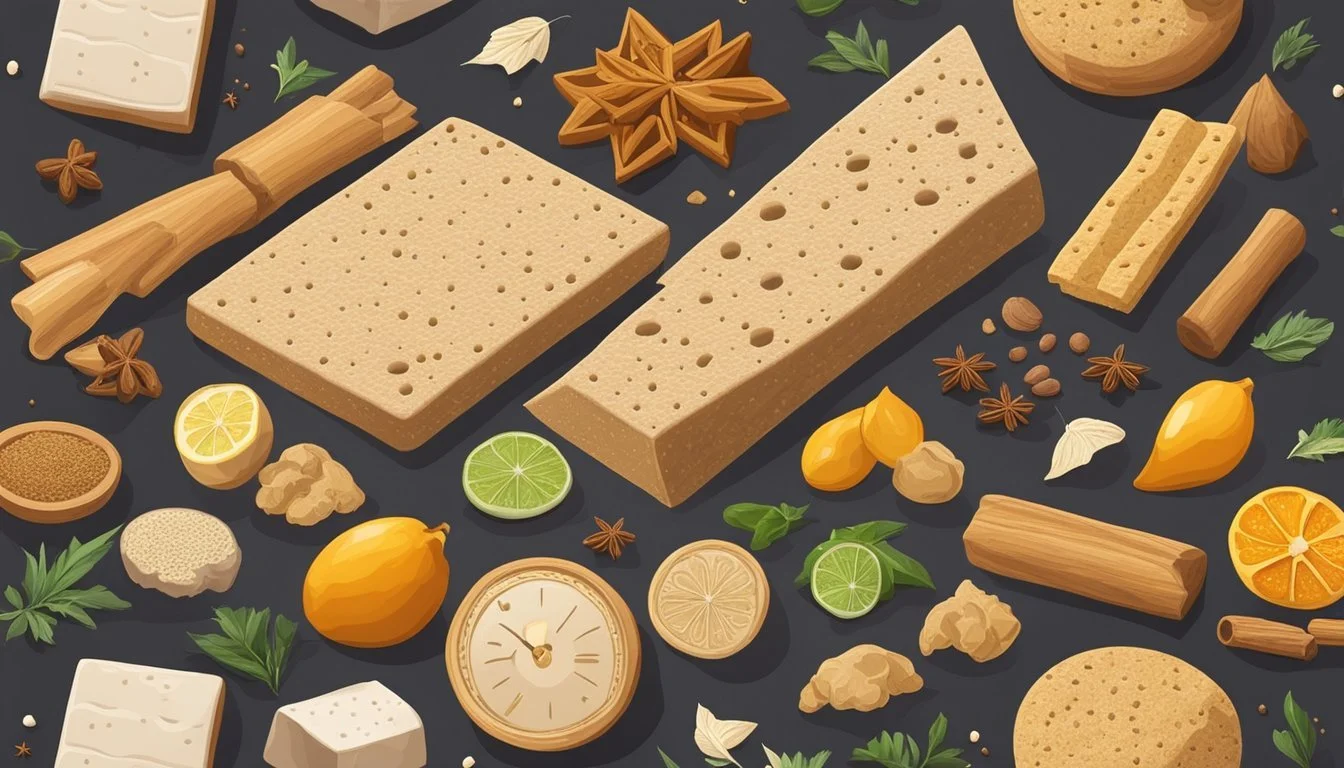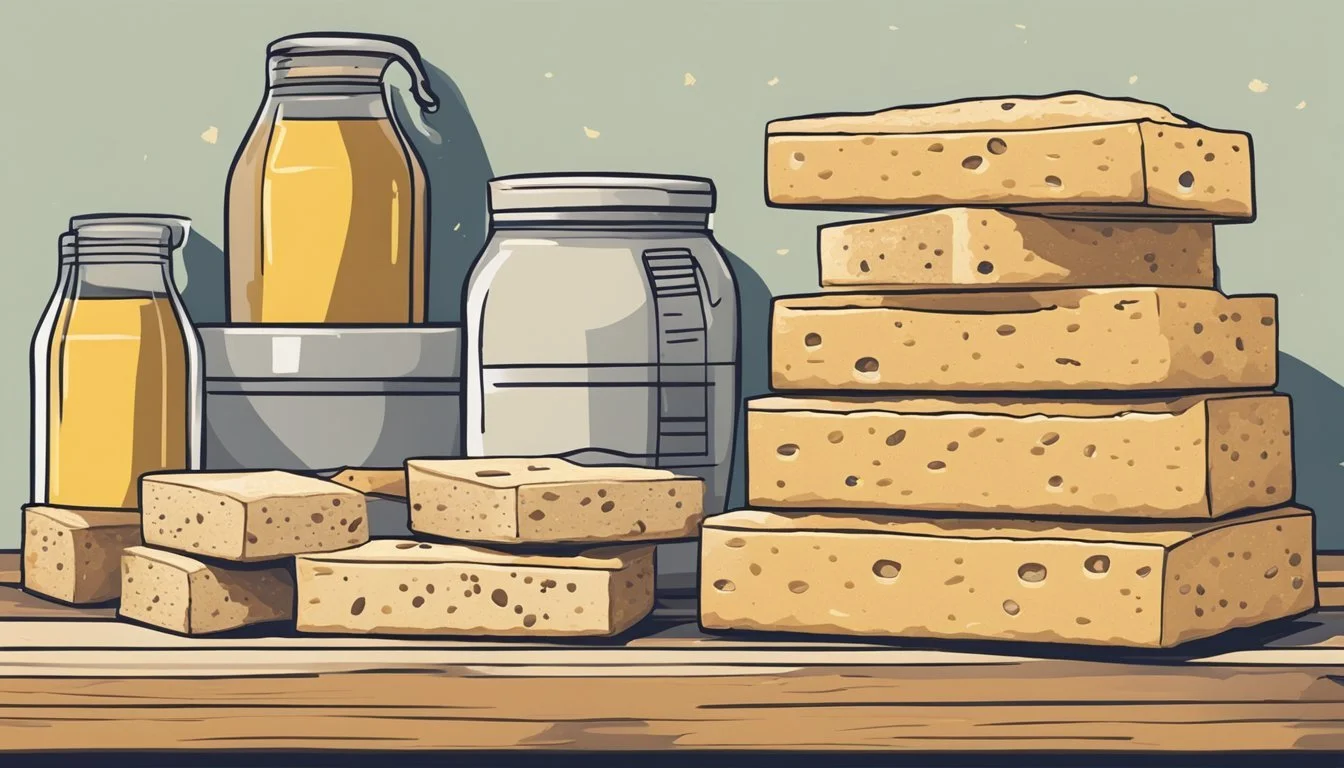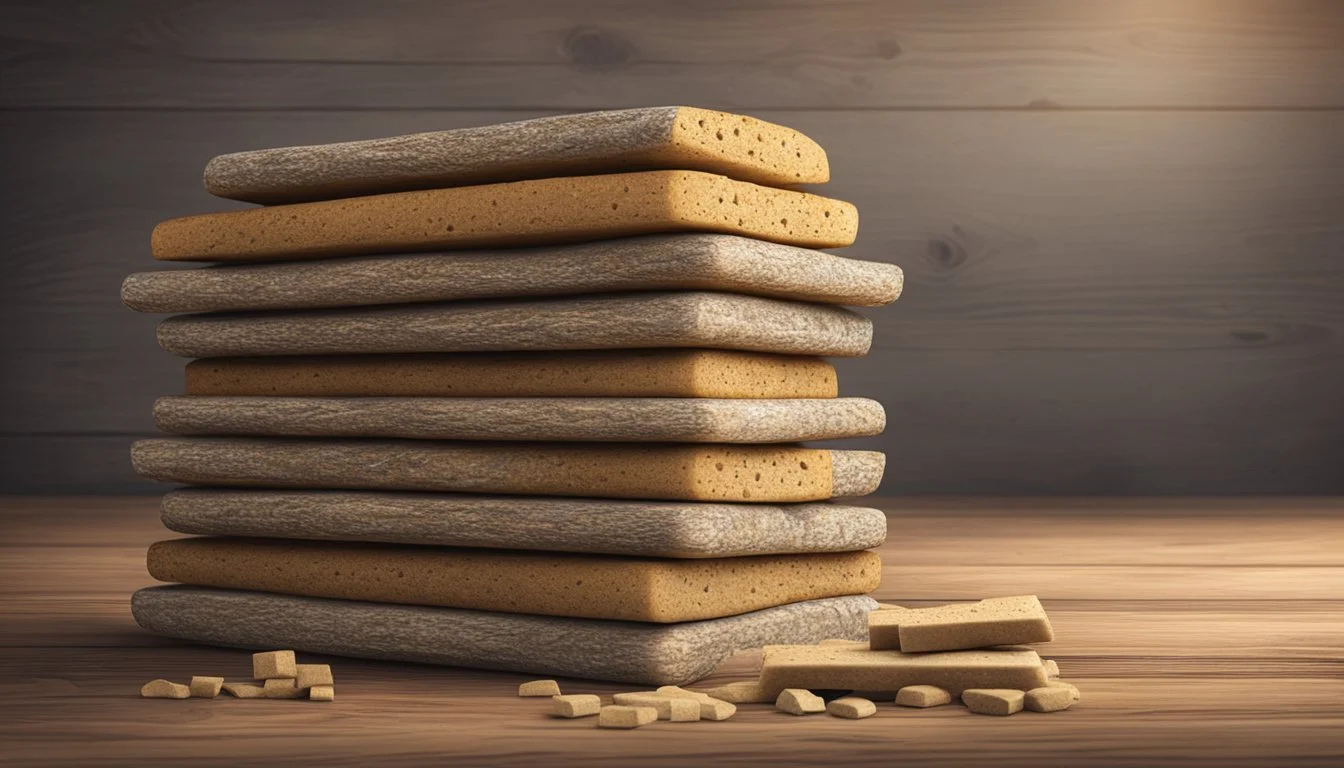How Long Does Hardtack Last?
Shelf Life and Preservation Tips
Hardtack, a simple type of biscuit or cracker made from flour, water, and sometimes salt, is known for its incredible shelf life. Historically favored by sailors, soldiers, and pioneers due to its durability and ease of transport, hardtack has become a topic of interest for those looking into survival foods or historical eating habits. Properly prepared and stored, hardtack can last for years, with some sources suggesting a lifespan of up to 25 years under optimal conditions.
The longevity of hardtack is largely due to its minimal moisture content and lack of perishable ingredients which can spoil or deteriorate over time. This dry, dense biscuit was a staple during long voyages and military campaigns precisely because of its resistance to mold and decay when kept in a cool, dry environment. Furthermore, modern techniques such as vacuum sealing and the use of oxygen absorbers can extend its edible period significantly, making it a viable option for long-term emergency food supplies.
History of Hardtack
Hardtack, a simple but long-lasting type of biscuit, has been a crucial part of military and maritime sustenance for centuries. It typically consists of flour, water, and sometimes salt, known for its durability and resistance to spoilage.
Role in the American Civil War
During the American Civil War, hardtack served as a staple element of a soldier's ration. It was favored by both Union and Confederate armies due to its long shelf life and ease of transport. The biscuit was often referred to as "sheet iron" or "tooth dullers" due to its toughness. The typical hardtack consumed by soldiers in the Civil War was roughly 3 inches by 3 inches and nearly half an inch thick. Despite its hardness, which could often lead to weevil infestations or mold if not stored properly, it provided a vital source of calories for soldiers in the field.
Usage by Sailors and Soldiers
Sailors and soldiers have relied on hardtack during long voyages and military campaigns for centuries. As a non-perishable food item, it was particularly advantageous for militaries and naval expeditions before the advent of canned foods and modern preservation techniques. For sailors, the longevity of hardtack meant that ships could be at sea for many months at a time without the risk of their basic food supply spoiling. It was commonly issued in combination with salt meat, forming the bulk of the diet on ships and in military encampments.
Defining Hardtack
Hardtack is a simple, durable foodstuff with a significant history as a survival ration. Its longevity is a defining characteristic, making it a staple for long journeys and emergencies.
Basic Composition
The fundamental ingredients of hardtack are flour and water, combined to form a stiff dough. Occasionally, salt is added for flavor and its preservative qualities. The key to hardtack's longevity lies in its lack of perishable components and minimal moisture content after baking.
Flour: All-purpose flour is the traditional base.
Water: Just enough to form a dense dough.
Salt (Optional): Can act as a natural preservative.
Common Variations
While the classic recipe of hardtack biscuits is straightforward, some variations do exist. The biscuits, often referred to as "sea biscuit" by sailors, may sometimes include salt for added preservation. The basic recipe might be altered slightly for different tastes or nutritional content, but the principle remains the same: simplicity and shelf-stability are paramount.
Classic Hardtack: Plain flour and water.
Salted Hardtack: Addition of salt for flavor and preservation.
Nutritional Profile
The nutritional essence of hardtack lies in its simplicity, primarily offering calories and carbohydrates due to its basic ingredients: flour and water, with an occasional addition of salt.
Caloric Content
Hardtack is a high-energy food with a significant caloric yield. The caloric content stems mainly from carbohydrates. A standard 3×3-inch hardtack biscuit, typically weighing approximately 2.5 ounces, contains about 258 calories.
Vitamins and Minerals
Hardtack is not renowned for its vitamin and mineral content; its nutritional value primarily revolves around macronutrients. Due to the use of refined white flour, hardtack is low in vitamins and minerals. The primary nourishment it provides is in the form of carbohydrates and a modest amount of protein. The fat content is almost negligible, with a standard ounce of hardtack made from white flour containing just 0.28 grams of fat.
Hardtack Recipe
Hardtack is a simple, long-lasting bread typically made from only flour, water, and sometimes salt. Its longevity and easy preparation make it a practical choice for long-term sustenance.
Ingredient Selection
Ingredients:
Flour: Hardtack traditionally uses white flour, but whole wheat can be substituted for more fiber.
Water: Use cool, clean water.
Salt (optional): While not necessary, it can be added for taste.
Selecting quality ingredients is essential for the best outcome. The absence of fats or leavening agents in the recipe contributes to hardtack's long shelf life.
Step-by-Step Baking Process
Preheat the Oven: Set the oven to 375 degrees Fahrenheit to ensure it's at the right temperature when the dough is ready to be baked.
Mixing Dough: Combine flour and optional salt in a bowl, then slowly add water, mixing until a firm dough forms— one that does not stick to the fingers.
Rolling: Transfer the dough to a flat surface and roll it out to a thickness of 1/4" to 1/2". A rolling pin is ideal for achieving even thickness.
Forming Holes: Use a fork or a dough docker to poke holes evenly throughout the dough. This will ensure it bakes thoroughly.
Cutting: Slice the dough into uniform squares, approximately 3"x3" size. Consistent shape and size lead to even baking.
Baking: Place the dough pieces on an ungreased baking sheet, and bake in the preheated oven for 30 to 40 minutes, then flip each piece and continue to bake for another 25 to 45 minutes.
The dough should be worked until it's just pliable but still firm. Proper rolling, docking (poking holes), and baking are the keys to a hardtack that will last for years when stored properly.
Optimizing Shelf Life
Hardtack can last an exceptionally long time when stored properly. Optimal storage conditions and proactive protection methods are crucial for extending its shelf life and preventing spoilage.
Ideal Storage Conditions
For hardtack to achieve its potential longevity, it should be kept in an airtight container to minimize moisture and oxygen exposure. Low humidity levels are essential, as moisture is a catalyst for mold growth. Including oxygen absorbers in the storage container can further enhance preservation by reducing the risk of oxidation. Store hardtack in a cool, dry place out of direct light exposure to help maintain its quality over time.
Temperature: Below 21°C (70°F)
Humidity: 10-15%
Light: Minimal exposure
Protecting Against Pests and Mold
Hardtack must be safeguarded against insects, pests, and mold, which can compromise its edibility. A dual approach of vacuum sealing and the use of food-safe containers can be effective. Vacuum sealing removes air that can carry bacteria and pests, while solid containers provide a physical barrier. Regular checks for signs of infestation or mold are important for ongoing protection.
Physical Barrier: Food-grade containers or metal tins
Vacuum Sealing: Eliminates air that may contain contaminants
Inspection: Periodic checks can identify and mitigate early signs of spoilage
Additional Preservation Techniques
Preserving hardtack efficiently is crucial for extending its shelf life. While traditional preparation methods already lend hardtack a considerable longevity, certain additional preservation techniques can further enhance its durability.
Inclusion of Preservatives
Incorporating preservatives such as salt into the hardtack recipe can significantly inhibit spoilage. Salt acts as a natural preservative by creating an environment that's hostile to bacteria growth, thus increasing the longevity of the hardtack.
Function of Salt:
Salt decreases water activity.
Deters microbial growth.
Vacuum Sealing and Desiccants
Vacuum sealing is an effective method for preserving hardtack because it removes air from the packaging, thus reducing oxidation and the growth of microorganisms. For added protection, one might include an oxygen absorber or a desiccant within the sealed package.
Advantages of Vacuum Sealing:
Reduces oxygen exposure.
Limits growth of aerobic organisms.
Use of Desiccants:
Absorbs any residual moisture.
Helps maintain dryness, crucial for hardtack preservation.
Variations and Flavors
While traditional hardtack is appreciated for its longevity and simple ingredients, adding flavor enhances the experience of consuming this durable food. However, it should be noted that any variations must maintain the low moisture content that is vital for preserving hardtack's shelf-life.
Herbs and Spices
Infusing hardtack with herbs and spices is a common way to impart flavor while adhering to moisture restrictions. A small amount of sugar or cinnamon can be added to the dough before baking for a subtle sweetness. Savory options include mixing rosemary or other dried herbs into the batter. These should be used sparingly, as too much could introduce unwanted moisture.
Common spices and herbs used:
Cinnamon (ground or stick)
Rosemary
Other safe, dry spices tailored to personal taste
Addition of Nuts and Dried Fruits
Incorporating nuts or dried fruits into hardtack also offers a variation in texture and taste. When adding these ingredients, it's crucial to ensure they are completely dehydrated, as any residual moisture can decrease the shelf-life significantly.
Suggestions for nuts and dried fruits include:
Walnuts, almonds, or pecans (finely chopped)
Raisins, apricots or dates (properly dried and cut into small pieces)
It is important for the baker to be mindful of the quantities and sizes of these additional components to retain the essential dryness that characterizes long-lasting hardtack.
Uses in Modern Times
Although hardtack dates back to ancient seafaring times, its use persists today due to its long shelf life and durability, especially in situations requiring non-perishable food items.
Survival and Emergency Situations
In the face of natural disasters or situations where traditional food sources are unavailable, hardtack serves as a reliable form of sustenance due to its prolonged shelf life of over five years when properly stored. Preppers and survival enthusiasts often include hardtack in their emergency food stores because of its resistance to spoilage. It's a minimal-fuss survival food, akin to modern-day MREs (Meals, Ready-to-Eat) and lifeboat rations, providing essential calories during an SHTF (shit hits the fan) scenario. Vacuum sealing hardtack or using Mylar bags for storage significantly contributes to its longevity.
Storage Tips:
Vacuum sealed: Enhances shelf life by creating an air-tight environment.
Use of desiccants or oxygen absorbers can extend freshness.
Storing in a cool, dry place safeguards against moisture and pests.
Reenactments and Education
Hardtack is not only practical as a survival ration but also holds educational value in historical reenactments and teaching. It offers a tangible connection to the past, particularly for Civil War and maritime history demonstrations. Participants use hardtack to recreate authentic experiences and to educate the public about the living conditions of soldiers and sailors in bygone eras. The simple recipe and preparation methods allow educational institutions and reenactment enthusiasts to create their own hardtack for these purposes.
Educational Aspects:
Historical accuracy: Provides an authentic component for historical demonstrations.
Tactile learning: Offers a hands-on understanding of historical food preservation.
Concluding Thoughts
Hardtack has a long-standing reputation for being a durable source of sustenance. Its long shelf life makes it an ideal choice for scenarios requiring reliable food sources over extended periods. Historically significant, hardtack provided nutrition during military campaigns, where spoilage-resistant provisions were a necessity.
In terms of durability, properly prepared hardtack can be extraordinarily long-lived.
Vacuum sealing: Increases shelf life up to 5 years or more.
Storage environment: Cool, dry places are optimal.
Moreover, hardtack’s simple ingredients—flour, water, and sometimes salt—contribute to its durability. The absence of perishable components adds to its remarkable shelf life. For added longevity:
Keep moisture content minimal.
Store in airtight containers, like Mylar bags.
It is crucial to compare hardtack to other long-lasting foods like pemmican. While both can be stored for lengthy periods, they serve different nutritional purposes. Pemmican offers higher protein and fat content; hardtack primarily provides carbohydrates. They complement each other as sources of sustenance.
In summary, when stored under optimal conditions, hardtack presents itself as a reliable food item, with a potential longevity spanning decades. It stands testament to the historical need for foods that could withstand the rigors of time and environmental challenges, ensuring a stable supply of calories, even in the absence of fresh provisions.


